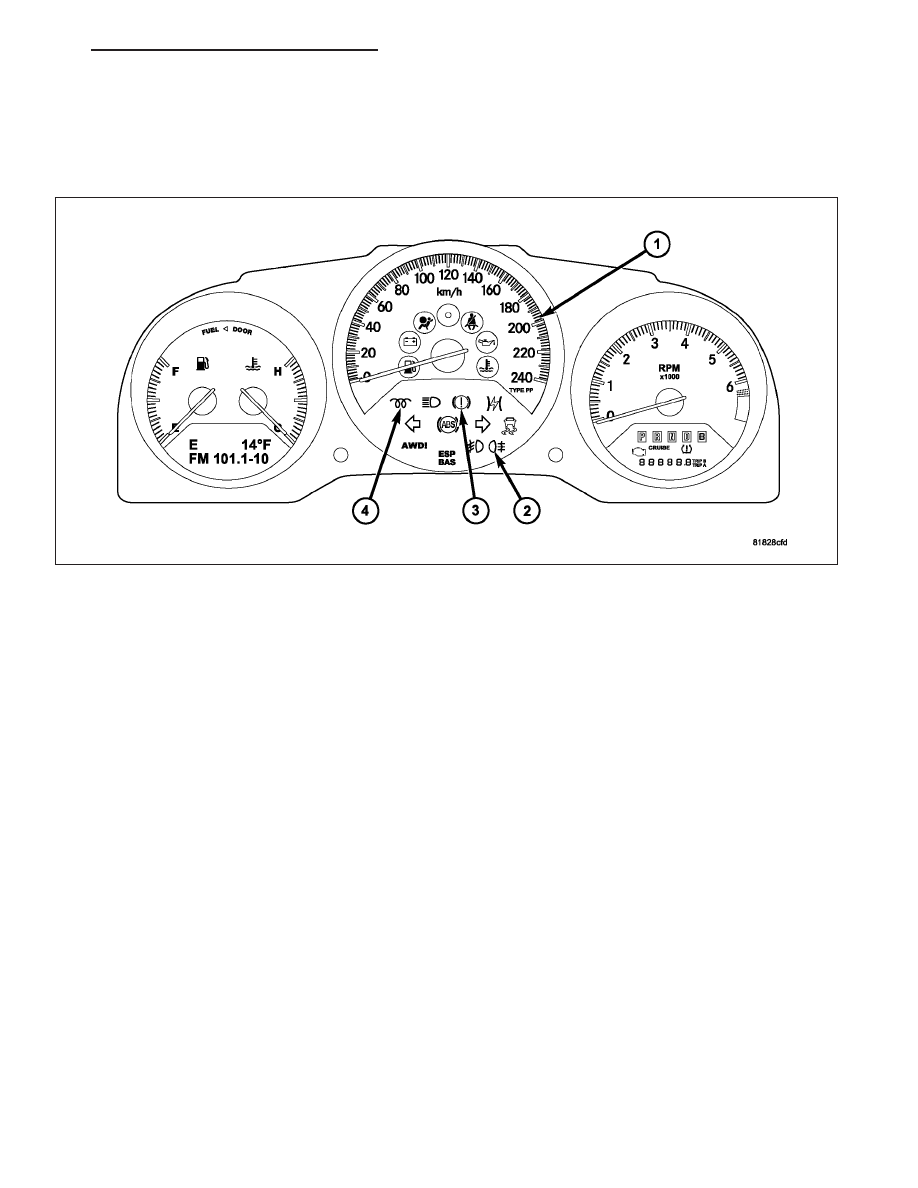Dodge Caliber. Manual - part 339

•
Traction Control Indicator (20)
•
Transmission Over Temperature Indicator (CVT transmission only) (30)
•
Turn Signal (Right and Left) Indicators (21)
BUX CLUSTER/CCN
The BUX CCN is relatively the same as domestic for the exception of:
•
Brake Fail/Park Brake Indicator (3)
•
Rear Fog lamps Indicator (2)
•
Speedometer - Kilometers per hour (km/h) (1)
•
Wait to Start Indicator (diesel only) (4)
OPERATION
The ElectroMechanical Instrument Cluster (EMIC) in this model also includes the hardware and software necessary
to serve as the electronic body control module and is sometimes referred to as the Cab Compartment Node or
CCN. The following information deals primarily with the instrument cluster functions of this unit. Additional details of
the electronic body control functions of this unit may be found within the service information for the system or com-
ponent that the CCN controls. For example: Additional details of the audible warning functions of the CCN are found
within the Chime/Buzzer service information.
The CCN is designed to allow the vehicle operator to monitor the conditions of many of the vehicle components and
operating systems. The gauges and indicators in the CCN provide valuable information about the various standard
and optional powertrains, fuel and emissions systems, cooling systems, lighting systems, safety systems and many
other convenience items. The CCN is installed in the instrument panel so that all of these monitors can be easily
viewed by the vehicle operator when driving, while still allowing relative ease of access for service.
The microprocessor-based CCN hardware and software uses various inputs to control the gauges and indicators
visible on the face of the cluster. Some of these inputs are hard wired, but most are in the form of electronic mes-
sages that are transmitted by other electronic modules over the Controller Area Network (CAN) data bus and the
Local Interconnect Network (LIN) data bus. The CCN is the master of the LIN bus and there are four modules that
talk to the CCN: The Heated Seat Module (HSM), Remote Compass Module (RCM), Steering Control Module
(SCM), and the Accessory Switch Bank Module (ASBM) (Refer to 8 - ELECTRICAL/ELECTRONIC CONTROL
MODULES/COMMUNICATION - OPERATION).
The CCN microprocessor smooths the input data using algorithms to provide gauge readings that are accurate,
stable and responsive to operating conditions. These algorithms are designed to provide gauge readings during
normal operation that are consistent with customer expectations. However, when abnormal conditions exist such as
high coolant temperature, the algorithm can drive the gauge pointer to an extreme position and the microprocessor
PM
INSTRUMENT CLUSTER - SERVICE INFORMATION
8J - 49